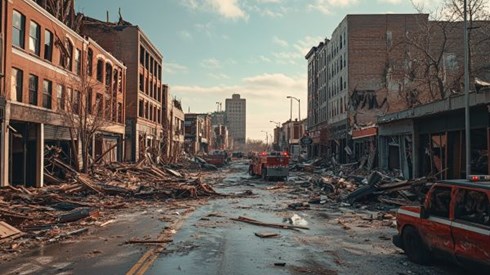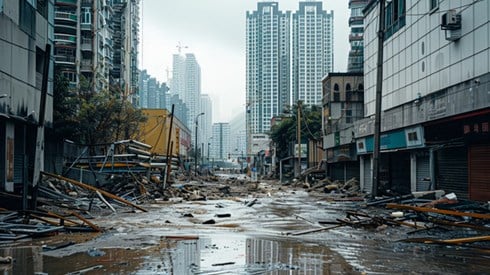Willis: Natural Catastrophes Expected to Drive Heavy Losses in 2025

July 31, 2025

Natural catastrophes are on track to generate more than $100 billion in insured losses for the seventh consecutive year, according to the Natural Catastrophe Review: January to June 2025 released by Willis, a WTW business. The report outlines key events from the first half of the year and projects continued losses through 2026.
The most significant loss event so far is the Los Angeles wildfire in January, which caused insured losses of more than $40 billion—making it the costliest wildfire ever recorded globally. "The wildfires in Los Angeles early in 2025 will drive estimated losses of $40 billion alone, so the streak looks set to continue," Peter Carter, head of climate practice at Willis, said in the report.
Other notable catastrophes include the worst wildfires in decades in Japan and South Korea, Ireland's highest recorded wind speed, and the first cyclone to make landfall near Brisbane in 50 years. The United States is also experiencing its third-most active tornado year on record, with over 1,300 tornadoes reported through mid-June, according to Willis.
Major US flood events in 2025 include a May flash flood in Houston and a June flooding event across the Midwest, both resulting in fatalities and substantial property damage. These events are part of what Willis describes as a "new era of extremes," driven by worsening climate conditions that increase both the frequency and scale of natural disasters.
"With global efforts likely failing to keep the temperature below 2°C above pre-industrial levels, our focus must now turn to adapting and building resilience in the face of this new reality," Mr. Carter said. According to Willis, this includes reassessing risk management strategies to integrate climate projections and enhance preparedness.
"The scale and timing of the [Los Angeles] event placed immediate pressure on insurers' catastrophe loss budgets at the beginning of the year and prompted a renewed focus on how wildfire risk is modelled," Cameron Rye, director of natural catastrophe analytics at Willis, said. Per the report, this includes prioritizing improved modeling in high-risk areas such as the urban-wildland interface.
Looking ahead, Willis warns of an above-average North Atlantic hurricane season and continued drought across parts of North America and Europe. According to the report, the second half of 2025 could contribute significantly to what is already shaping up to be one of the costliest catastrophe years on record for the insurance industry.
July 31, 2025
